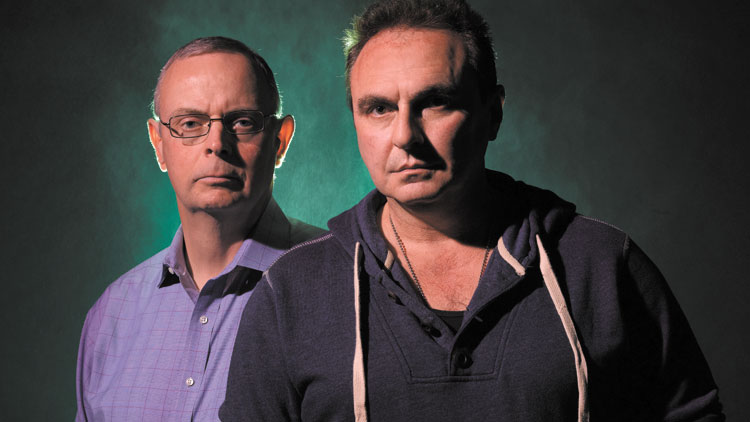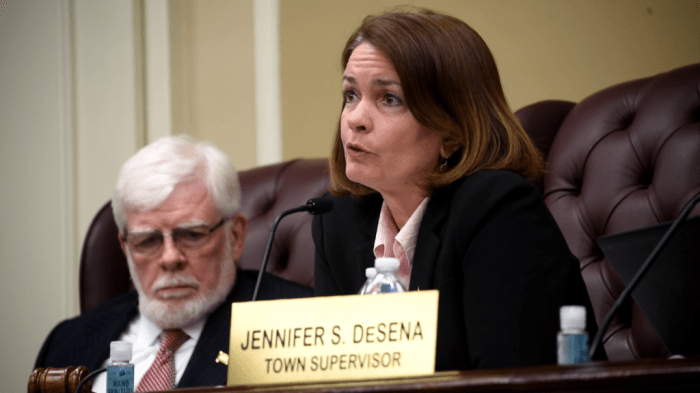Revelations
In August 2004, Neville’s ankles, legs and torso swelled out “like a water balloon,” he says.
Two weeks later, he was 25 pounds heavier. A week later, he was another 10 to 15 pounds heavier. A week after that, he was admitted into the hospital at 302 pounds—up from about 235 four weeks earlier.
Doctor after doctor didn’t know what was wrong with him. Eventually he found a specialist that did: membranous nephropathy, a rare kidney disease. He suffered with the weight buildup until 2009, when he went onto dialysis, for nine hours a day, daily—self-dialysising in his Woodside apartment and draining the dialysis fluid into his bathtub.
On July 20, 2011 he received a transplant from a childhood friend, Colleen Fortuna, something he’s forever grateful for.
“Fifty percent of the people die on dialysis,” he says. “She saved my life and gave me life.”
Neville didn’t know it back in 2004, but Depascale was also having serious health problems; the 53-year-old considers himself lucky compared to what he was enduring.
One night in May 2006, Depascale woke up to find that he couldn’t breathe.
“I thought I was having a heart attack,” he recalls. “I went to the hospital. They did an EKG, they did everything. They did the X-Rays and then they found something in my lungs. There was a shadow in my lung. That’s how I found out I was sick. A month later, I got a heart attack. I had both at the same time, cancer and a heart attack.”
Following several biopsies, they cut into his side to reach his lungs. He underwent chemotherapy and had a tumor removed from his leg and about a quarter of one of his lungs. It was Stage Four extraskeletal myxoid chondrosarcoma, an ultra-rare bone cancer that had originated in his leg and spread to his lungs. Depascale’s still undergoing periodic surgeries.
After seeing a news report on TV about the Sylvania site’s history and thinking back to what looked like a remediation project taking place at the site during a chance drive-by sometime shortly after they left the company in 2002, he called Neville.
“I didn’t believe Gerry when he told me,” says Neville. “But he filed a Freedom of Information Act and in December we went into that building.”
The pair was briefly allowed access to a room at the DEC’s offices at Stony Brook University filled with boxes of documents about the site’s nuclear past. Then Neville filed Freedom of Information requests of his own, for anything and everything to do with it. The DEC and state Attorney General’s Office, however, stonewalled him for months, he says.
The two began connecting the dots.
“I was healthy all my life,” says Depascale. “There’s no cancer in my family. There’s no heart attack history in my family… The doctors told me it was environmental.”
In February 2009, only after Neville enlisted the help of a state senator, the DEC released 1,300 out of approximately 3,400 records it withheld from him. It was a treasure trove documenting exactly what went on at the site, and besides validating their worst suspicions, proved that GTE and regulators also knew of its radioactive past as early as 1986. They just kept it all to themselves.
Some highlights from just one of those reports:
“In 1986, during construction of a 30,000 square-foot (ft2) addition on the east side of Building #4, a cache of 57 buried drums was discovered. These drums, along with 80 to 90 cubic yards (yds3) of soil (containing primarily PCE and TCE), were removed from the area for off-site disposal,” states a December 2006 Soil Remediation Report prepared for GTE.
“During this soil remediation, a total of 194,733,449 pounds (approximately 97,000 tons) of soil was excavated and shipped from the site for proper disposal,” it reads, referring to another phase of GTE’s remediation efforts.
Even excavating nearly 100,000 tons and shipping it by train to Utah still wasn’t enough to clean the site, however, the records show: “isolated areas” of uranium, thorium, nickel and other contaminants remained.
Neville also got photos: men in full-body Haz-Mat suits excavating massive buried containers full of radioactive sludge and liquids; another conducting a “field survey of blue-green material;” crushed subterranean metal anomalies; “gamma spectroscopy analytical equipment;” an extremely deep excavation pit; and a movable tented “excavation enclosure with airlock entrance” half the size of a football field; among many others.
Also eye-opening were the depositions he obtained from the 2002 class-action on behalf of Hicksville residents.
Stuart Opdahl, who worked at the Sylvania site in the 1950s, said he originally contacted plaintiffs’ attorneys out of concern some of the operations may have polluted the area. He told defense attorneys he incinerated uranium fibers in a “very crude smelting oven” outdoors:
“You would get this blue flame coming out. And many times, it would carry some kind of waste product with it. You know, just like any burning fire that was open of this nature. It didn’t have any—any kind of cleaning mechanism above this that, you know, would drop fibers back…This went straight out above the—the oven.
Neville, upon finally learning the truth, says he “flipped out.”
“I knew right away what happened. How could they possibly do this and allow us to move into that building?” he asks.
The fact that Verizon has already performed so much remediation at the site is proof of their accountability, he contends. So is the massive paper trail.
Regardless, the Jan. 15 oral arguments must focus on convincing federal Appeals judges that the 88-year-old Ronald Reagan-appointed Wexler abused the district court’s discretion by granting a limited retrial, among other things.
And though Neville’s a betting man, he still doesn’t like his odds. But he holds onto hope. It’s not just about two warehouse workers holding a $230 billion company responsible, he insists. He and Depascale will shoulder the weight of countless other workers from that site who may be sick or will get sick because of its atomic past, too.
“How do I shave in the morning, look in the mirror, if I didn’t go all the way with this?” he asks. “Suppose, just suppose I walked away from this during the second trial, and just let it end. What about the other people that are sick? It ends here; then they can’t sue. Then Verizon wins the whole ball of wax.
“It’s for all of us,” he continues. “If we lose with fighting the whole way, that’s fine, I just lost the fight… But if we can beat them here, then, everyone’s got a chance.
“That’s what Verizon’s afraid of.”































